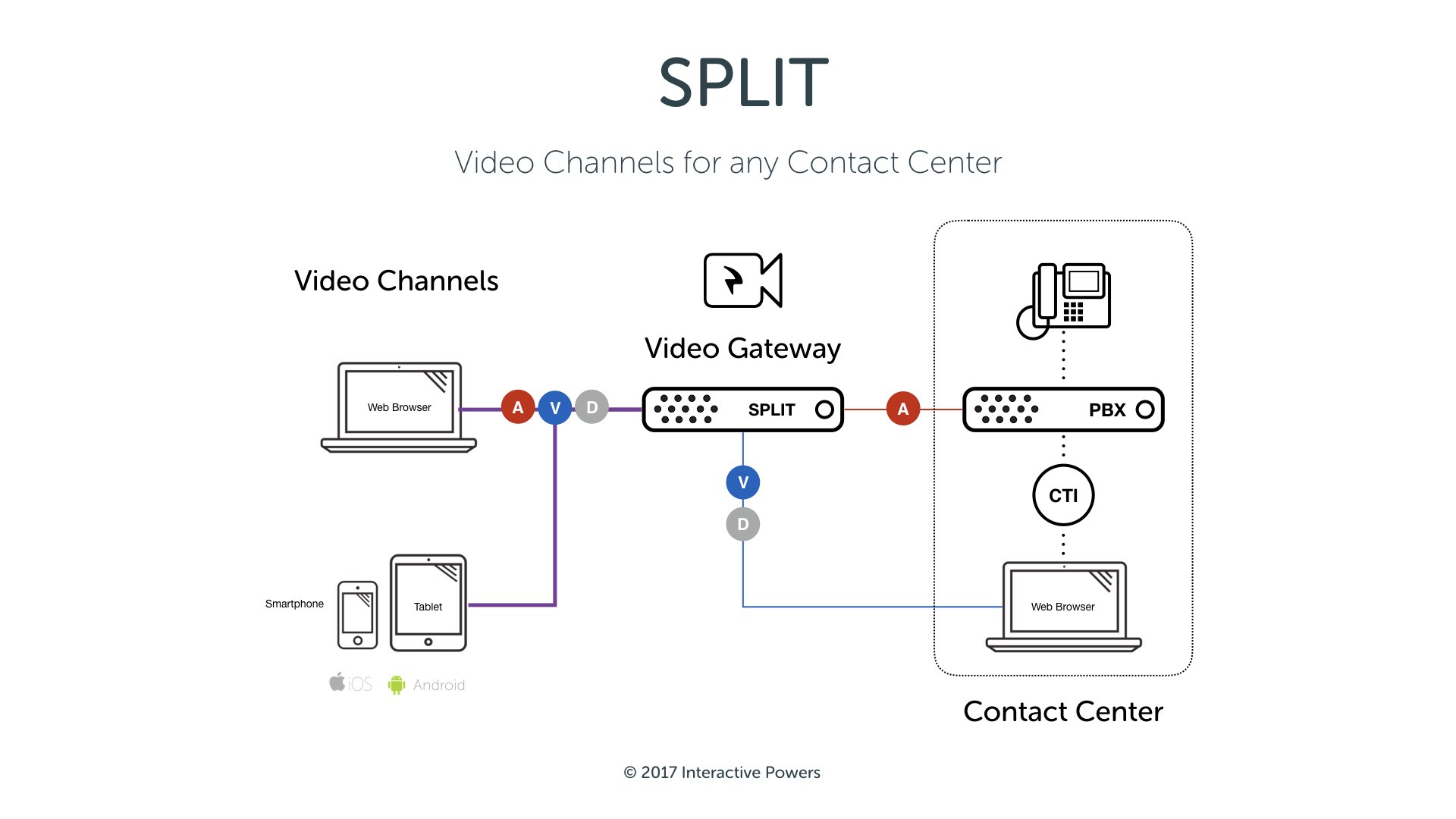What is SPLIT?

All Video Gateways (WebRTC | RTMP) developed by IVRPowers include a special plugin which allows separate the media streams (video - audio - data) for any communication between users and agents. This development is based on SIP and WebRTC | RTMP peers communications for the integration of voice, video and data in Contact Centers.
How does SPLIT work?
The Audio-Video SPLIT mode works as following:
A Videocall is initiated by a customer endpoint and comes into the Video Gateway. This session will be composed of three media streams (video, data and audio) blended together in a single interaction:
Step 1. Audio & Video Decouplexing
Decouples the three media streams from the incoming Videocall (mixed stream is split into a video + data stream and an audio stream). Remember, all the communication channel between peers works in Full Duplex.
Step 2. WebRTC | RTMP to SIP Converting
Converts the audio stream to a regular SIP call that can be transferred to an external telephony system. Along with the call signaling, a unique ID generated by the Video Gateway (WebRTC | RTMP) is sent (typically in a custom SIP header or CallerID field)
Step 3. Video Streaming
Keep the video stream on hold and make available a public URL published on the server itself (using the unique ID) to devices that want to connect to the video stream and establish a two-way video communication. Typically, this URL is opened from the computer of the ACD agent assigned with the audio call through some sort of automated action (Pop-up Agent). The video stream is sent to the computer over the WebRTC protocol.
Benefits for IP Contact Centers
This operation mode has various advantages when integrating the Video Call channel into a Contact Center strategy, namely: Agents can use their regular phone to receive the audio stream of video calls like any other regular call treatment, routing strategies, IVR flows, ACD distribution, etc.. already implemented in the telephony system can be leveraged to process Video Interaction calls, since the audio part is seen by this system as a regular call. Since the audio part of the call goes through the telephony system as a regular call, it can be listened to and recorded like a regular call (assuming these features are available).
Interactive Powers - Streamline your business communications